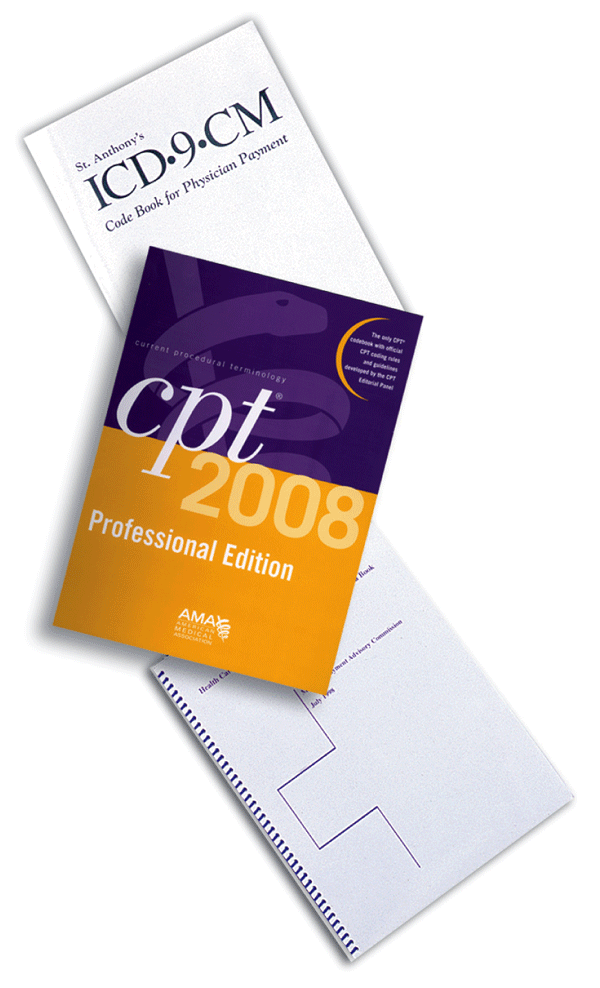 Q: Were there any major changes to the CPT manual in 2008?
Q: Were there any major changes to the CPT manual in 2008?
A: Yes. Several new codes exist for retina procedures. They are:
• 67113–Repair of complex retinal detachment (e.g., proliferative vitreoretinopathy, stage C-1 or greater, diabetic traction retinal detachment, retinopathy of prematurity, retinal tear of greater than 90 degrees), with vitrectomy and membrane peeling, may include air, gas or silicone oil tamponade, cryotherapy, endolaser photocoagulation, drainage of subretinal fluid, scleral buckling, and/ or removal of lens.
• 67041–Vitrectomy, mechanical, pars plana approach; with removal of preretinal cellular membrane (e.g., macular pucker).
• 67042–Vitrectomy, mechanical, pars plana approach; with removal of internal limiting membrane of retina (e.g., for repair of macular hole, diabetic macular edema), includes, if performed, intraocular tamponade (i.e., air, gas or silicone oil).
• 67043–Vitrectomy, mechanical, pars plana approach; with removal of subretinal membrane (e.g., choroidal neovascularization), includes, if performed, intraocular tamponade (i.e., air, gas or silicone oil) and laser photocoagulation.
CPT code 67038–Vitrectomy, mechanical, pars plana approach; with epiretinal membrane stripping, has been deleted. The new code, 67113, appears to have replaced the combination of 67108 and 67038.
A new code was introduced to describe laser treatment for ROP:
• 67229–Treatment of extensive or progressive retinopathy, one or more sessions; preterm infant (less than 37 weeks gestation at birth), performed from birth up to 1 year of age (e.g., retinopathy of prematurity), photocoagulation or cryotherapy.
An additional new code, not related to retina, is in the lacrimal system section of CPT: • 68816– Probing of nasolacrimal duct, with or without irrigation; with transluminal balloon catheter dilation.
Q: Were there any new ophthalmic ICD-9 or HCPCS codes in 2008?
A: New ICD-9 codes appear in the 2008 manual that were effective October 2007. They are: 364.81–Floppy iris syndrome; and 364.89–Other disorders of iris and ciliary body.
Ranibizumab (Lucentis) received a unique HCPCS code effective January 1, 2008: J2778, ranibizumab, 0.1 mg. Because the drug is delivered in 0.5-mg single use vials, the claim form must indicate five units for appropriate payment amounts.
Q: What types of ophthalmic services are being scrutinized by the Office of Inspector General in 2008?
A: The OIG 2008 work plan suggests that ophthalmologists will continue to see the following areas scrutinized: place-of-service errors; evaluation-and-management services in the global period; and incident-to services.
New areas of scrutiny include: reassignment of benefits; adherence to assignment rules; payments for selected physician services (broad way of designating all services eligible for inquiry).
The full OIG work plan can be found on the OIG website (oig.hhs.gov).
Q: Are there any positive changes in the Medicare Physician Fee Schedule?
A: Very few. The fee schedule published November 1, 2007 contains the expected update of -10.1 percent with a conversion factor of $34.0682. Ophthalmology as a specialty expects a 9-percent reduction. CMS-1385-FC makes public the revisions to physician payment policies for 2008 and other Part B payment policies. The faulty sustainable growth rate formula continues to be the source of the problem and no current plans exist to fix it. In prior years, Congress intervened and the dramatic cut was averted; we expect aggressive lobbying to once again avert this extraordinary reduction.
On a positive note, the relative value units associated with some ophthalmic services increase in 2008. The ophthalmology codes (920xx) RVUs, overlooked in 2007, show a positive change. Corneal topography (92025) realizes a small increase. Surgical codes 66984 (cataract surgery) and 66821 (YAG laser capsulotomy) decrease.
Other program changes impact only certain segments. Although it only affected a small number of practices, the Physician Scarcity Area bonus program that began January 2005 expired December 31, 2007. The Health Professional Shortage Area program continues in HPSA areas.
The Physician Quality Reporting Initiative remains voluntary for 2008, the first complete year for reporting quality measures and securing the 1.5- percent bonus. The 2007 reporting period only involved reporting from July to December 2007.
The PQRI's ophthalmology-specific measures were reduced. In 2007, eight ophthalmic measures existed. In 2008, four specific measures exist to describe ophthalmic services. They are: primary open-angle glaucoma: optic nerve evaluation; age-related macular degeneration: dilated macular examination; diabetic retinopathy: documentation of presence or absence of macular edema and level of severity of retinopathy; and diabetic retinopathy: communication with the physician managing ongoing diabetes care.
Q: What changes will affect Medicare beneficiaries?
A: Premiums and deductibles will increase. Continued growth in Medicare's fee-for-service plan creates a demand on diminishing Medicare funds. One way to offset the growing expense is to share the liability with Medicare beneficiaries.
Part B premiums for 2008 for individuals with incomes of less than $82,000 are $96.40 per month. The 2008 Part B premium increase is the smallest percentage increase since 2001. In 2007, income-based premiums began for those with individual incomes of more than $80,000. This continues in 2008, with a new individual minimum income of $82,000. Income-based premiums should affect only 5 percent of Medicare beneficiaries.
Expect to see continued yearly increases in the Medicare deductible. The Medicare Modernization Act of 2003 introduced a formula for adjusting the Part B deductible, linking it to the annual percentage increase in the Part B actuarial rate for aged beneficiaries. In 2008, the Part B deductible increases (for the fourth straight year) to $135.

Ms. McCune is vice president of Corcoran Consulting Group. Contact her at DMcCune @corcoranccg.com.



